ONLINE VACATION
QINLING MOUNTAIN ANIMALS, CHINA
10/01/13
Hi Everyone. We are doing something different today. We are
going to the Qinling Mountain, which is in the Himalaya Mountain
range, in China. What we are looking for, is the
unusual animals that live there. Hope you enjoy this trip. ~Marsha~
QINLING MOUNTAINS
The Qinling Mountains are a major mountain range located mainly in the
Eastern province of Shaanxi, in China. The mountains provide a natural boundary
between the North and South of the country, and support a huge
variety of plant and wildlife, some of which is found nowhere else on Earth.
The Northern side of the range is prone to cold weather, while
the physical barrier of the mountains mean that the land to the
South enjoys a sub-tropical climate, with the rich, fertile landscape supporting
a wealth of wildlife and vegetation. Until the late 1990s when a
railway tunnel was completed, travel across the range was very difficult.
QINLING PANDA
The Qinling Panda is the only known subspecies of the Giant Panda.
It was identified in 2004. There are a number of physical differences
between the Qinling Panda and the Giant Panda. The Qinling Panda is
overall smaller. Its head is smaller and more round, yet its teeth
are large. Its fur is light and dark brown as compared to
the black and white of the Giant Panda. It is only found
in the Qinling Mountains where it is protected with the help of
the nature reserves. There are an estimated 200-300 Qinling Pandas in the wild.


GOLDEN TAKIN
The golden takin is an endangered goat-antelope native to China. Takins
are adapted to staying warm and dry during winters in the
Himalayan Mountain regions they inhabit. A thick, secondary coat is grown to
keep out the cold. Their large, moose-like snout has large sinus
cavities that warm up the air a takin inhales which prevents the
loss of body heat by breathing. Although they have no skin glands,
their skin secretes an oily substance that provides a water barrier that
protects takins from the elements. They are around the same size
as a cow and are very aggressive.


GOLDEN SNUB-NOSED MONKEY
According to an estimate published in 2001, this subspecies included about
3,800-4,000 individuals (about half of them adults) in Qinling Mountains.
They eat a diet of leaves, fruits, seeds, nuts, bark and flowers.


TEMMINCK'S TRAGOPAN
The Temminck's Tragopan is a medium-sized pheasant. The male is a
stocky red-and-orange bird with white-spotted plumage, black bill and
pink legs. It has a bare blue facial skin, inflatable dark-blue
lappet and horns. The female is a white-spotted brown bird
with blue circular eye skin.
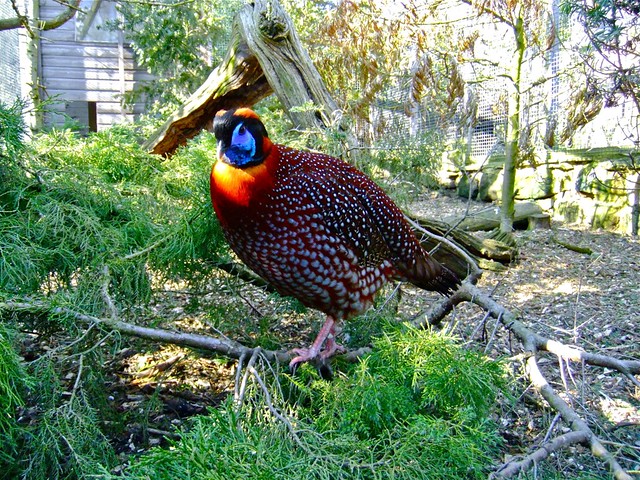

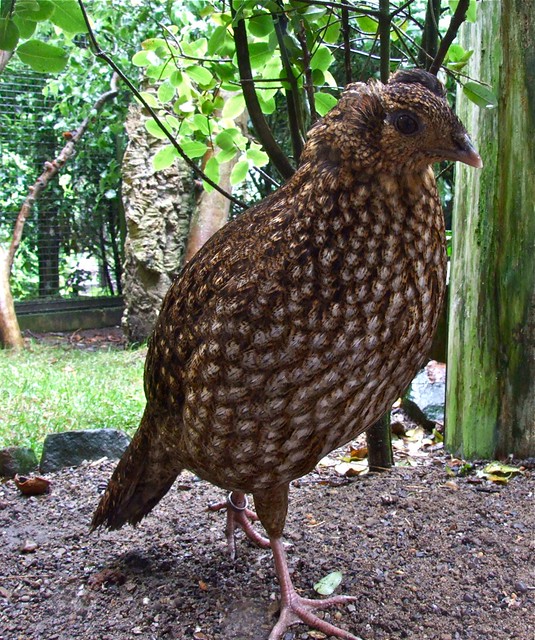
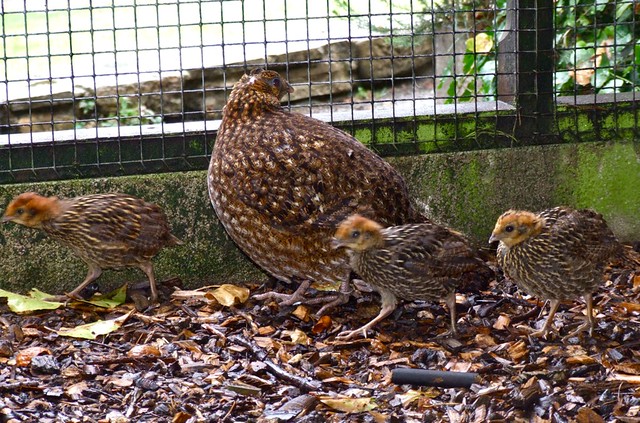
CRESTED IBIS
This species has become endangered and lives in this one particular area,
where it has an extremely small population. Although its population continues to
increase, there are now perhaps more than 250 mature individuals. Distinctive
bushy-crested ibis has red facial skin and legs. Non-breeding
adults are white while breeding adults have grey head, neck, mantle and scapulars.





GOLDEN EAGLE
The Golden Eagle is one of the best-known birds of prey.
It is the most widely distributed species of eagle. These birds are
dark brown, with lighter golden-brown plumage on their napes. Immature eagles
of this species typically have white on the tail and often have
white markings on the wings. Golden Eagles use their agility and speed
combined with extremely powerful feet and massive, sharp talons to snatch up
a variety of prey (mainly hares, rabbits, marmots and other ground squirrels).
Golden Eagles maintain home ranges or territories that may be as large
as 77 square miles. They build large nests in high places (mainly cliffs)
to which they may return for several breeding years. Females lay up
to four eggs, and then incubate them for six weeks. Typically,
one or two young survive to fledge in about three months. These
juvenile Golden Eagles usually attain full independence in the fall, after which
they wander widely until establishing a territory for themselves in four to five years.


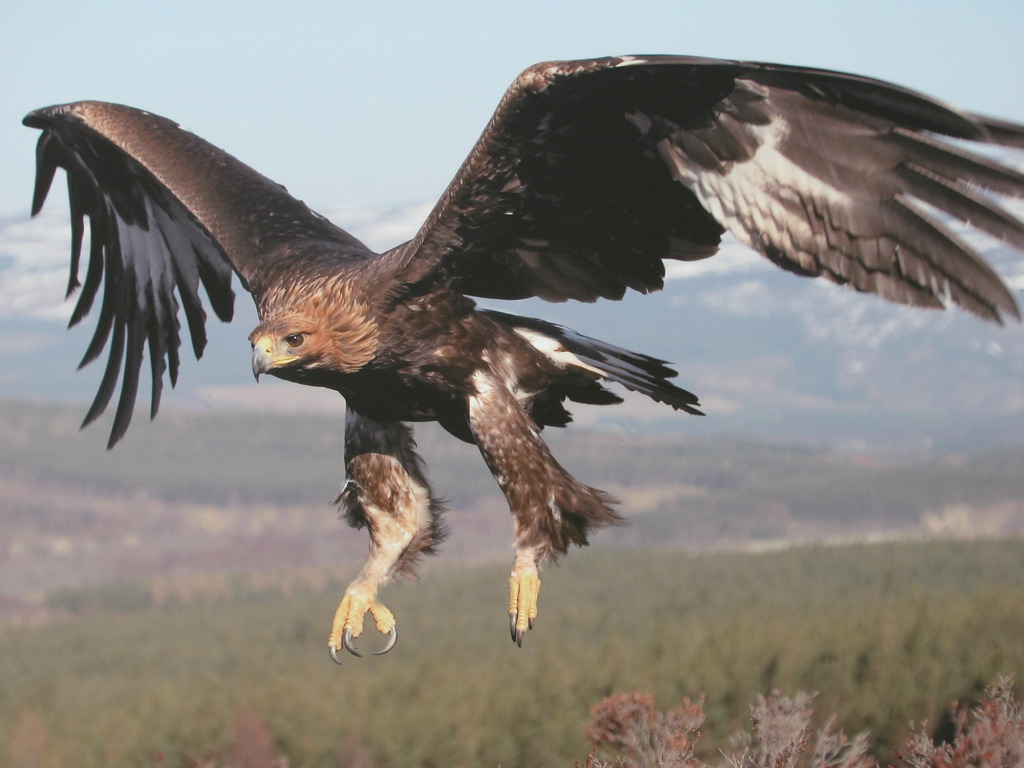

CLOUDED LEOPARD
The clouded leopard is a cat found from the Himalayan foothills,
and has been classified as Vulnerable (of extinction). Its total
population size is suspected to be fewer than 10,000 mature individuals.
They are the smallest of the big cats, and not closely related
to the leopard. Their average weight is 25 to 51 pounds.
The
fur of clouded leopards is of a dark grey color, often largely
obliterated by black and dark dusky-grey blotched pattern. There are black
spots on the head, and the ears are black. They have black
stripes on the side of their face.
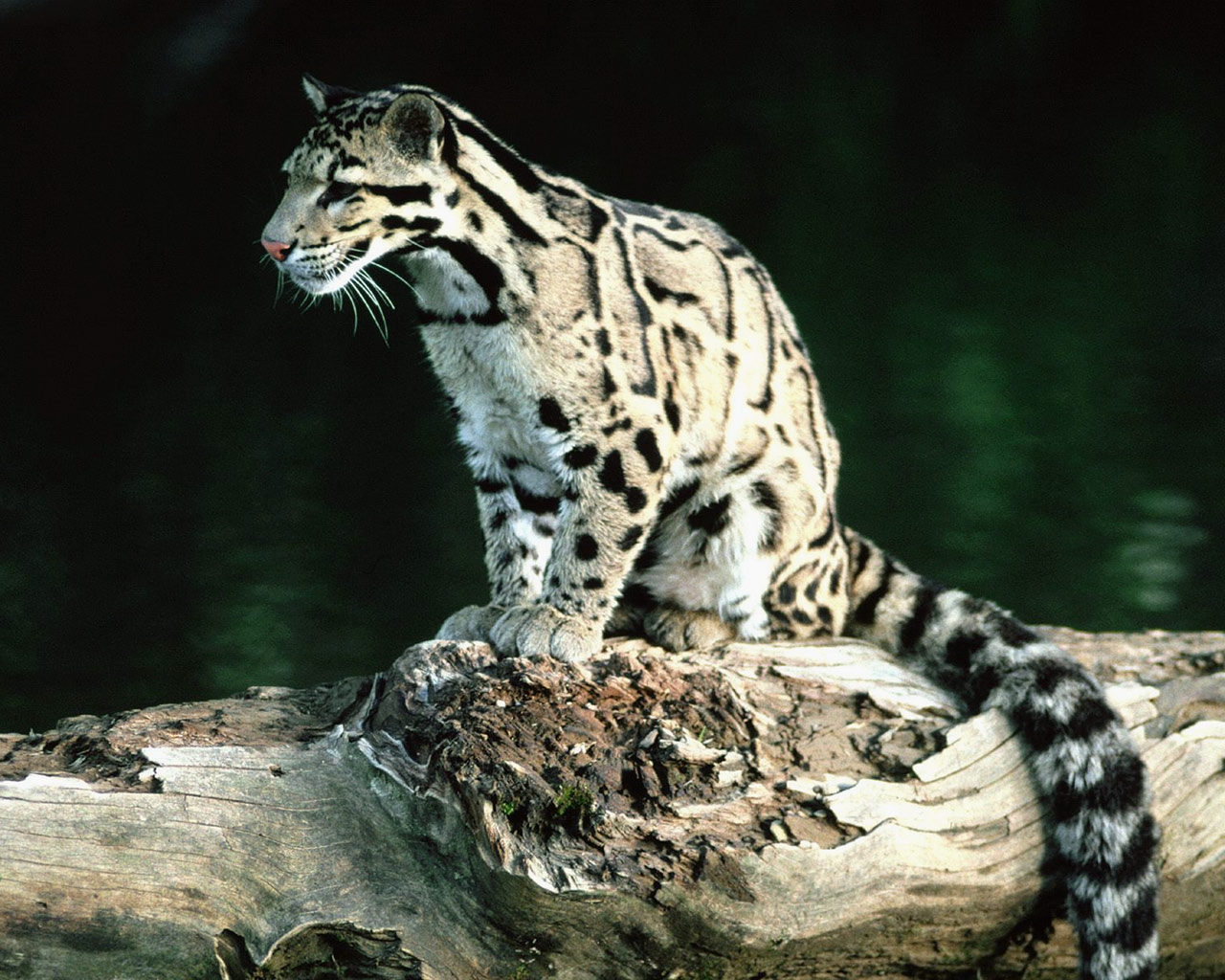



going to the Qinling Mountain, which is in the Himalaya Mountain
range, in China. What we are looking for, is the
unusual animals that live there. Hope you enjoy this trip.
~Marsha~
QINLING MOUNTAINS
The Qinling Mountains are a major mountain range located mainly in the
Eastern province of Shaanxi, in China. The mountains provide a natural boundary
between the North and South of the country, and support a huge
variety of plant and wildlife, some of which is found nowhere else on Earth.
The Northern side of the range is prone to cold weather, while
the physical barrier of the mountains mean that the land to the
South enjoys a sub-tropical climate, with the rich, fertile landscape supporting
a wealth of wildlife and vegetation. Until the late 1990s when a
railway tunnel was completed, travel across the range was very difficult.
QINLING PANDA
The Qinling Panda is the only known subspecies of the Giant Panda.
It was identified in 2004. There are a number of physical differences
between the Qinling Panda and the Giant Panda. The Qinling Panda is
overall smaller. Its head is smaller and more round, yet its teeth
are large. Its fur is light and dark brown as compared to
the black and white of the Giant Panda. It is only found
in the Qinling Mountains where it is protected with the help of
the nature reserves. There are an estimated 200-300 Qinling Pandas in the wild.


GOLDEN TAKIN
The golden takin is an endangered goat-antelope native to China. Takins
are adapted to staying warm and dry during winters in the
Himalayan Mountain regions they inhabit. A thick, secondary coat is grown to
keep out the cold. Their large, moose-like snout has large sinus
cavities that warm up the air a takin inhales which prevents the
loss of body heat by breathing. Although they have no skin glands,
their skin secretes an oily substance that provides a water barrier that
protects takins from the elements. They are around the same size
as a cow and are very aggressive.

GOLDEN SNUB-NOSED MONKEY
According to an estimate published in 2001, this subspecies included about
3,800-4,000 individuals (about half of them adults) in Qinling Mountains.
They eat a diet of leaves, fruits, seeds, nuts, bark and flowers.

TEMMINCK'S TRAGOPAN
The Temminck's Tragopan is a medium-sized pheasant. The male is a
stocky red-and-orange bird with white-spotted plumage, black bill and
pink legs. It has a bare blue facial skin, inflatable dark-blue
lappet and horns. The female is a white-spotted brown bird
with blue circular eye skin.




CRESTED IBIS
This species has become endangered and lives in this one particular area,
where it has an extremely small population. Although its population continues to
increase, there are now perhaps more than 250 mature individuals. Distinctive
bushy-crested ibis has red facial skin and legs. Non-breeding
adults are white while breeding adults have grey head, neck, mantle and scapulars.




GOLDEN EAGLE
The Golden Eagle is one of the best-known birds of prey.
It is the most widely distributed species of eagle. These birds are
dark brown, with lighter golden-brown plumage on their napes. Immature eagles
of this species typically have white on the tail and often have
white markings on the wings. Golden Eagles use their agility and speed
combined with extremely powerful feet and massive, sharp talons to snatch up
a variety of prey (mainly hares, rabbits, marmots and other ground squirrels).
Golden Eagles maintain home ranges or territories that may be as large
as 77 square miles. They build large nests in high places (mainly cliffs)
to which they may return for several breeding years. Females lay up
to four eggs, and then incubate them for six weeks. Typically,
one or two young survive to fledge in about three months. These
juvenile Golden Eagles usually attain full independence in the fall, after which
they wander widely until establishing a territory for themselves in four to five years.




CLOUDED LEOPARD
The clouded leopard is a cat found from the Himalayan foothills,
and has been classified as Vulnerable (of extinction). Its total
population size is suspected to be fewer than 10,000 mature individuals.
They are the smallest of the big cats, and not closely related
to the leopard. Their average weight is 25 to 51 pounds.
The
fur of clouded leopards is of a dark grey color, often largely
obliterated by black and dark dusky-grey blotched pattern. There are black
spots on the head, and the ears are black. They have black
stripes on the side of their face.




Information from BearsOfTheWorld.net, Wikipedia, BirdsLife.com
This is a MelloMarsha creation
I do not take credit for the pictures
Thanks to the respective photographers
9-30-13
BACK TO THE ONLINE VACATION INDEX